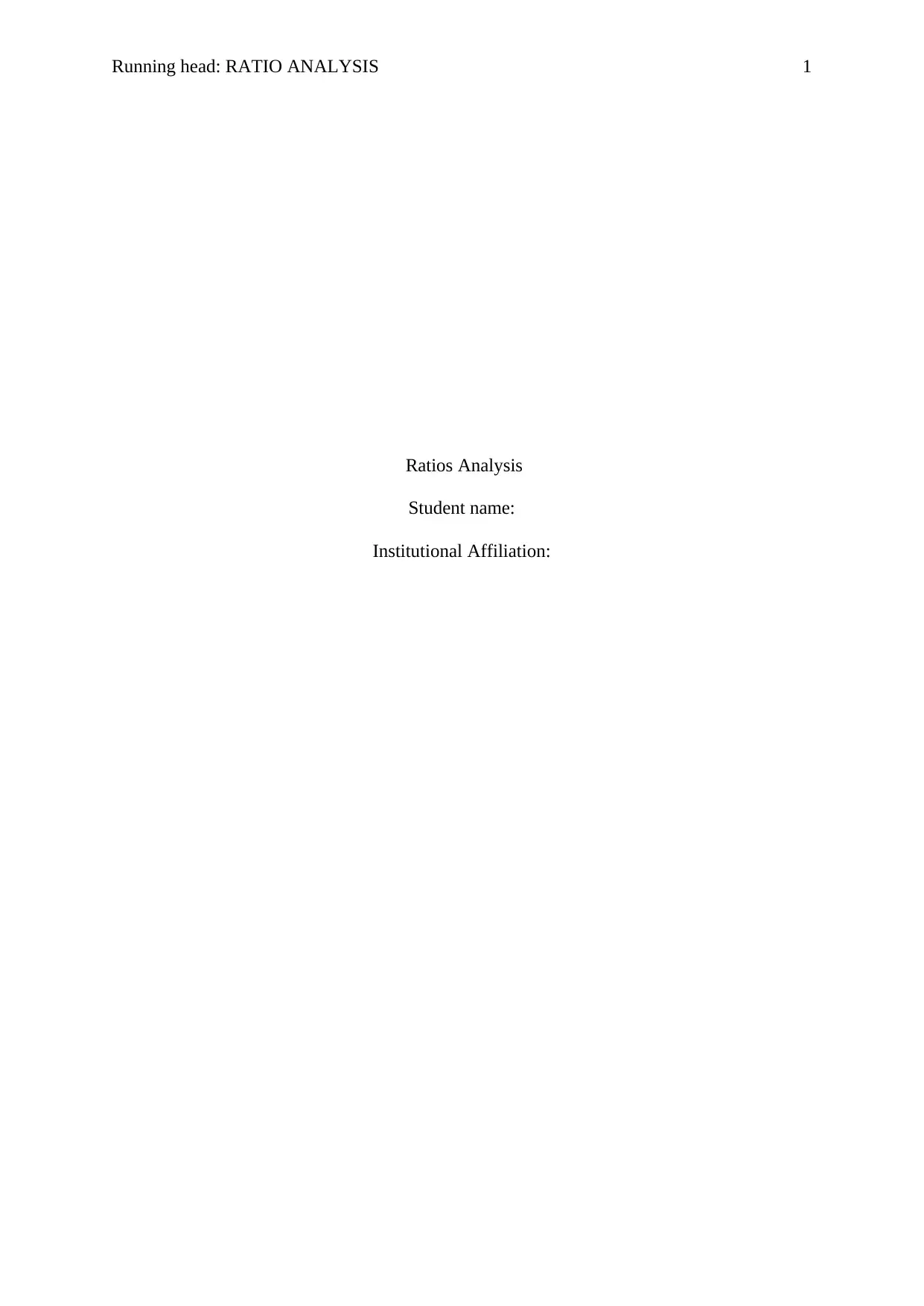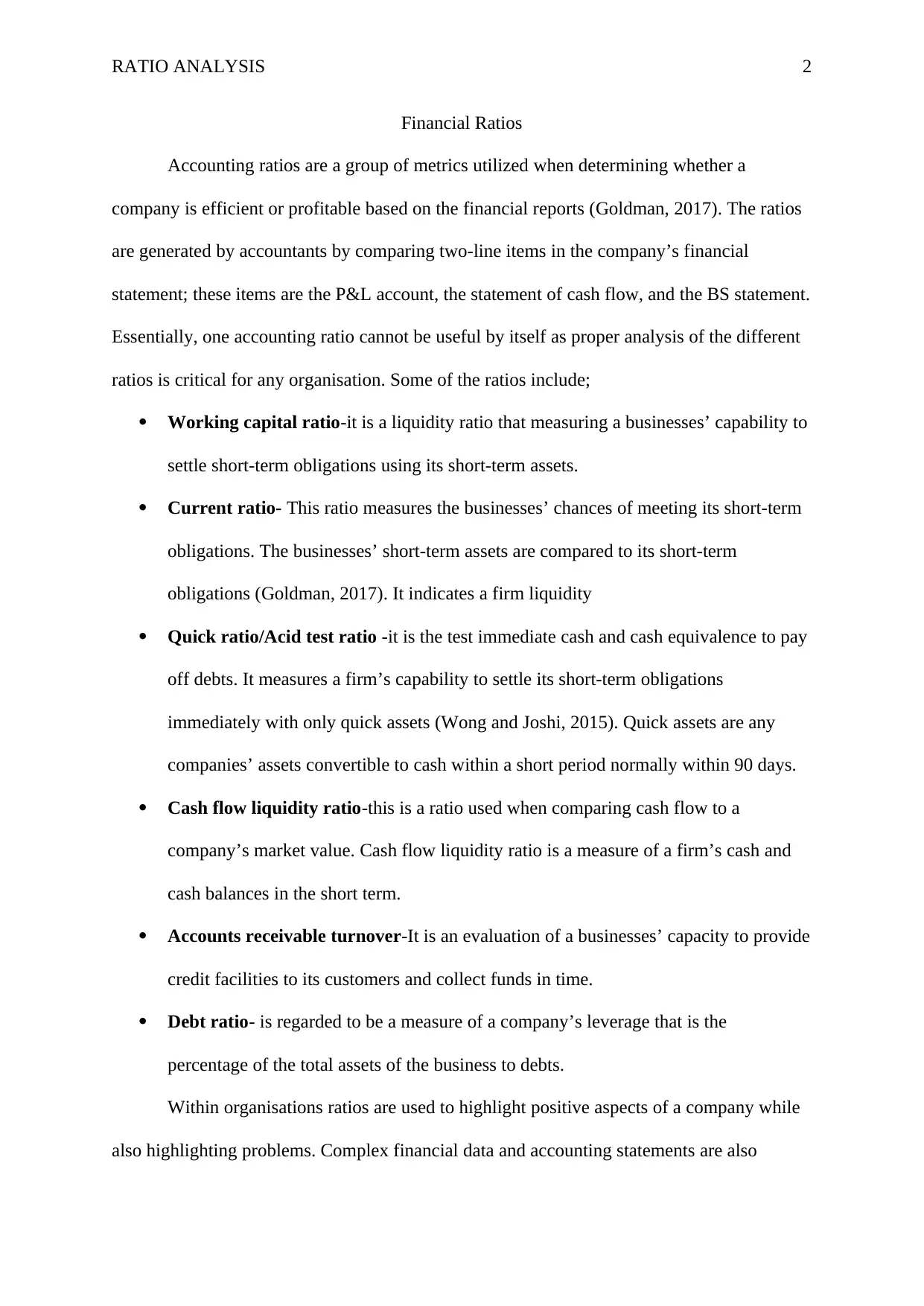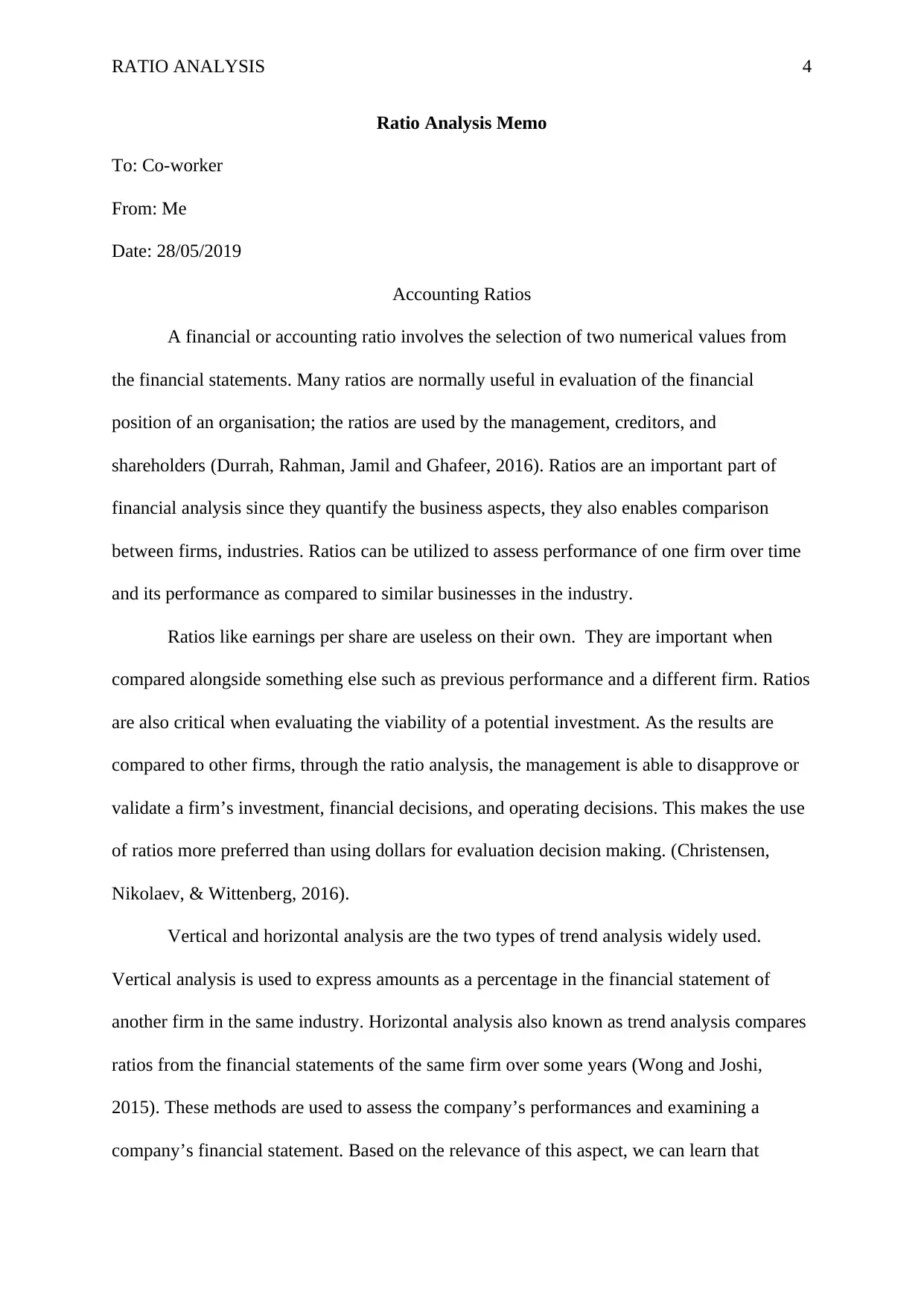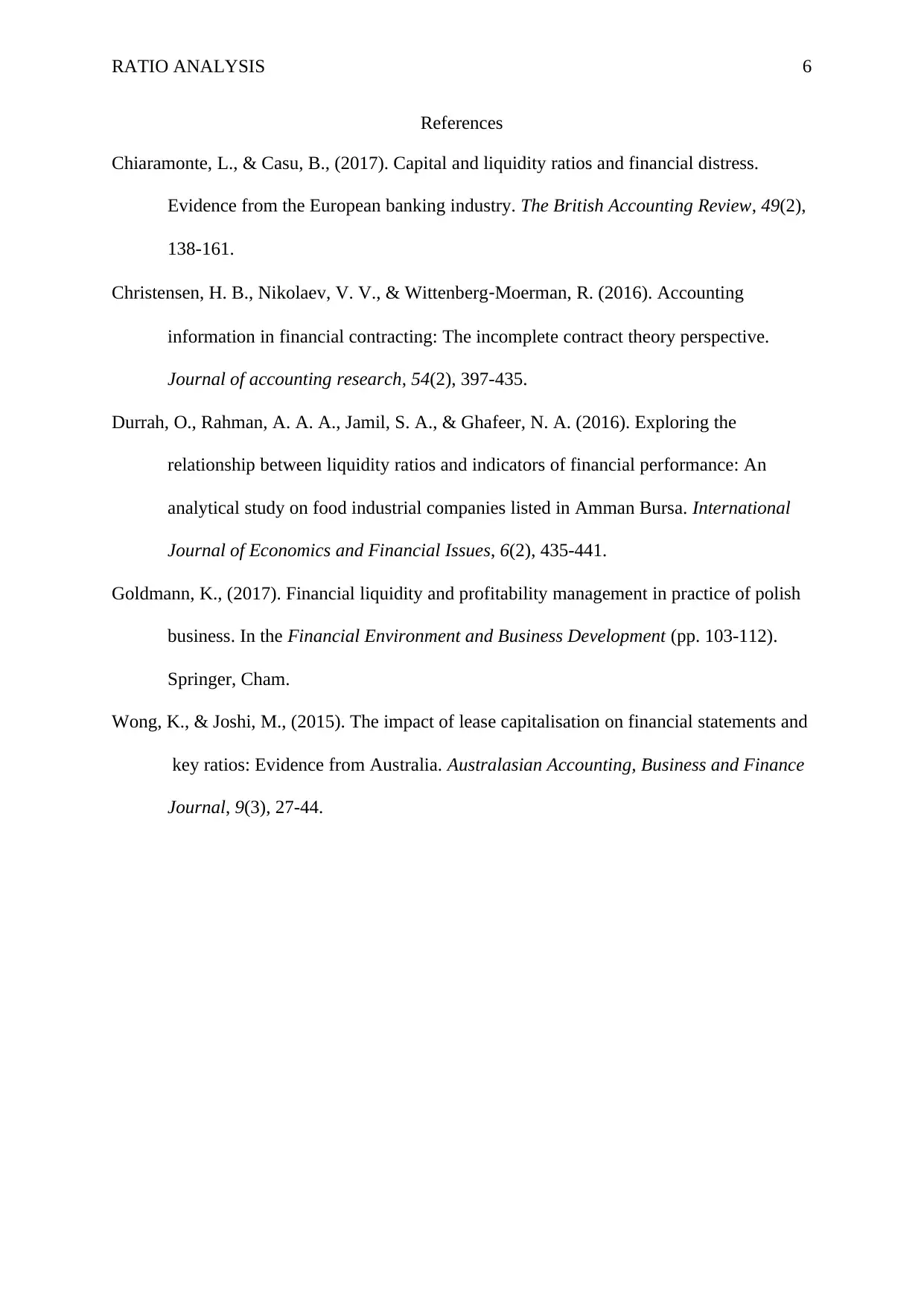Accounting Review: Financial Ratio Analysis Report
VerifiedAdded on 2023/03/31
|6
|820
|445
Report
AI Summary
This report provides a detailed analysis of financial ratios, crucial tools for assessing a company's performance and financial health. It begins by defining accounting ratios and their significance in evaluating a company's efficiency and profitability, drawing on financial statements like the P&L, statement of cash flow, and balance sheet. The report then explores various ratio types, including working capital, current, quick (acid-test), cash flow liquidity, accounts receivable turnover, and debt ratios, explaining how each provides insights into a company's liquidity, solvency, and ability to manage its assets and liabilities. The report highlights the use of ratios in internal and external comparisons, emphasizing their role in simplifying complex financial data and facilitating trend analysis through horizontal and vertical analysis. The report concludes with a memo summarizing the importance of ratio analysis for management, creditors, and shareholders, and the utility of ratio analysis for decision-making, investment evaluation, and comparing firms across industries. References are provided to support the analysis.
1 out of 6













![[object Object]](/_next/static/media/star-bottom.7253800d.svg)